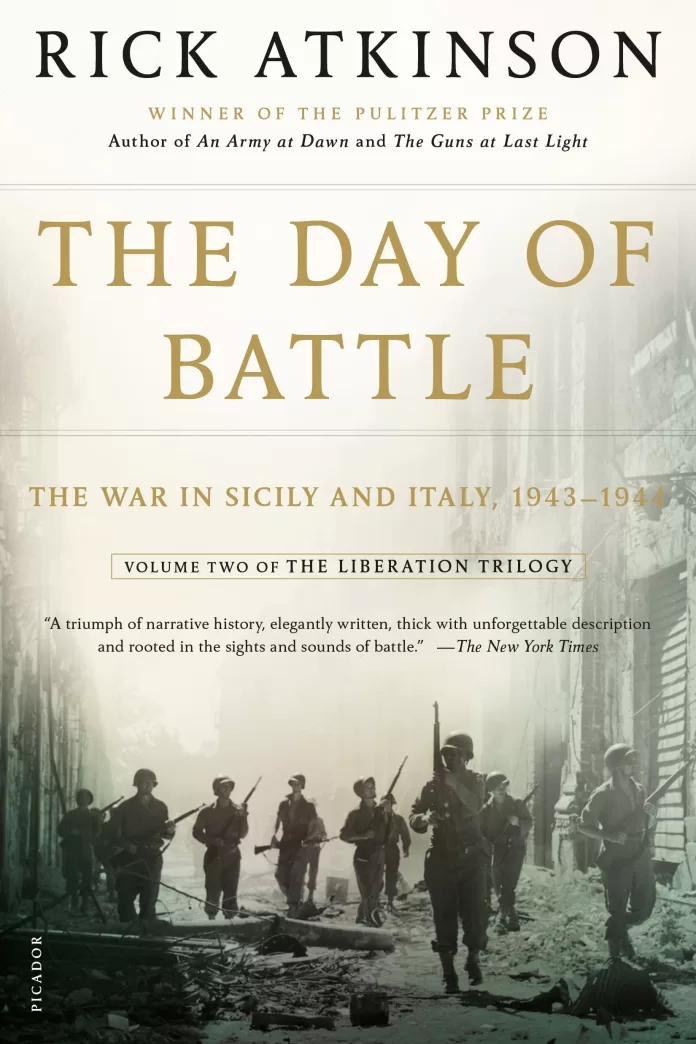For war was not just a military campaign but also a parable. There were lessons of camaraderie and beauty and inscrutable fate. There were lessons of honor and courage; of compassion and sacrifice. And then there was the saddest lesson to be learned again and again. That war is corrupting. That it corrodes the soul and tarnishes the spirit. That even the excellent and the superior can be defiled. That no heart can remain unstained.
The Day of the Battle by Rick Atkinson
Background
Wars and human society have co-existed since time immemorial. Before the industrial revolution battles raged between armies of kings/feudal lords in which loss of lives and property were limited in comparison to the level of destruction seen during the post industrial revolution campaigns of the Napoleonic era where the concept of nations at war had taken root. The two Great Wars of the twentieth century saw death and destruction at an unprecedented scale and the use of atomic bombs at the very fag end of WW II that incinerated and vaporised two major Japanese cities led to the conclusion that any future wars fought with nuclear weapons would throw back the remnants of survivors to the stone ages. Since fighting at the individual, group or national level appears to be ingrained as a part of human DNA and gene, to avoid an Armageddon, they have cleverly resorted to new ways of killing one another in armed conflicts that Rick Atkinson has very aptly described as both noble and demeaning.
Proxy Wars
USA and USSR had fought WW II as allies but immediately following the defeat of Germany and Japan in 1945 they fell apart. At the end of the war the two emerged as superpowers at the cost of other regional powers that went on a decline, making the globe essentially a bi-polar world. The world was neatly bifurcated into two categories: the Capitalist and the Communist Blocks with USA heading the former and USSR (Soviet Union) the latter. The Cold War had begun.
At the end of WW II USA had the sole possession of nuclear weapons and to checkmate USSR’s superiority in conventional arms in Europe, the doctrine of Massive Retaliation was put into effect. The doctrine envisaged the use of atomic weapons by USA if necessary to devastate USSR if the latter tried to take advantage of its superior conventional strength to invade Western Europe which was a part of the Capitalist Block under the tutelage of USA. By 1949 USSR had succeeded in developing and acquiring a nuclear arsenal of its own and Massive Retaliation quickly morphed into Mutually Assured Destruction (MAD), where the use of nuclear bombs by one would trigger a similar response by the other resulting in the mutual destruction of both, along with a large portion of the civilised world. To that extent, the two soon realised that direct military confrontation between their armed forces even at the conventional level could easily escalate to a nuclear war that neither could survive – there would be no victors, only losers. To protect and expand their spheres of influence they indulged in wars through their allies and client states where the two avoided direct military confrontation with each other. Historians have labelled them as Proxy Wars while these could also fall in the category of Limited Wars. The Korean, Vietnam and the Afghan (1979-88) Wars were proxy wars during the Cold War era. The details of these conflicts are attached as Appendix to this paper.
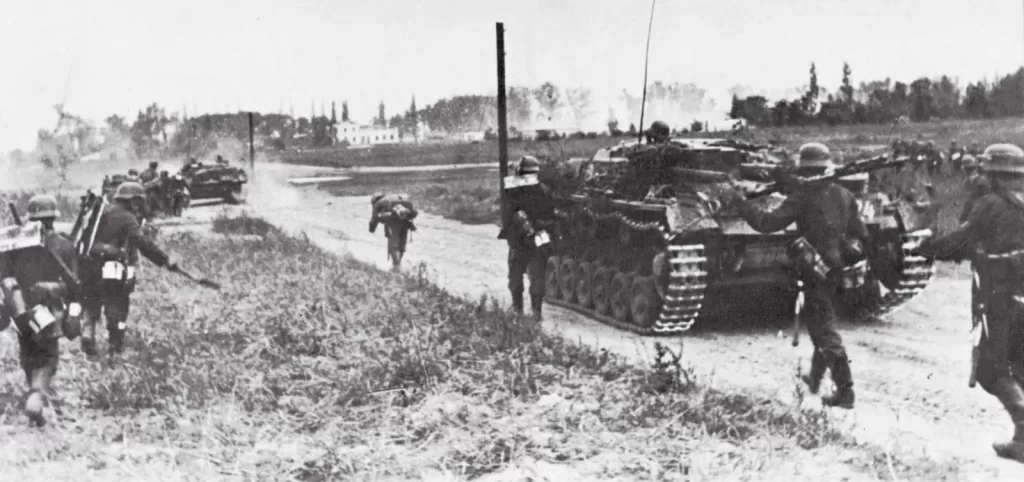
Limited Wars
War, according to AFM 1-1 of the PAF is a prolonged state of violent, large scale conflict involving two or more groups of people or states.1 The two Great Wars of the 20th century were followed by conflicts of lesser intensity, scope and duration that did meet the definition of war as stipulated in AFM 1-1 but needed to be differentiated from the Great Wars that occurred between major powers where vital national interests and even their survival were at stake and where all national resources were harnessed to the war effort and the impact of such wars were felt at the global level.2 The usage of the term Limited Wars for such conflicts became popular in the 1960s by military historians and scholars.
The term Limited War is not easy to define. During the Cold War, the classification Limited War described international conflicts short of Great War in which there would be no recourse to the use of nuclear weapons. In the post Cold War period one of the more widely accepted definition of Limited War by John Garnett is: A war fought for ends far short of the complete subordination of one’s state’s will to another’s and by means involving far less than the total military resources of the belligerents, leaving the civilian life and the assumed forces of the belligerents largely intact and leading to a bargained termination.3 Most of the wars (for example wars between India-Pakistan, Arab-Israel, Falkland, Iraq-Arab) that were fought post WW II are included in this category. While these conflicts would satisfy most of the criteria listed in the definition they do not meet all of them. Because of these difficulties, the term Limited Wars is becoming increasingly limited in its usage by modern military scholars.
Limited Wars were fought with conventional weapons (minus nuclear bombs) using conventional battle tactics and strategies that had been honed up to WW II and beyond by the armed forces of rival states. In this form of warfare modern advanced weapons technology plays a critical role and the near monopoly of the advanced nations on the production and possession of modern sophisticated and expensive conventional arms gave them a distinct advantage over adversaries from among the developing states. This imbalance led to the development and adoption of war strategies of different dimensions by the weaker side. Military historians refer to such conflicts as sub-conventional wars.
Sub-Conventional Wars
Unconventional or sub-conventional form of warfare is not a recent development: the American War of Independence, the Boer War, the Arab uprising against the Ottoman Rule led by the Lawrence of Arabia, and nearly all armed freedom struggle movements by colonies that have since gained independence from their former masters were waged through the employment of unconventional strategy by the weaker side and these fall in the category of sub-conventional wars.
Sub-conventional Warfare threats in the modern era up to the first half of the 20th century were mainly due to the struggle for freedom by societies that were colonized and after their liberation there was a marked reduction in such conflicts. Insurgencies especially in the newly independent states were not uncommon but were rarely at a level that threatened world peace.
Before the rise of religiously motivated violence, besides the freedom struggles, the sub-conventional threat was limited to transnational non-state actors involved in criminal activities (drug smuggling, human trafficking, gun-running etc) who resort to violence across international borders in a bid to protect or expand their turf. These crime syndicates exist and flourish because there is a demand for their goods in the recipient nations and unless this aspect of the supply and demand equation is addressed, the drug barons, the gun-runners and criminal mafias will continue to thrive and threaten the security of both their home bases and the countries where they export their poison.
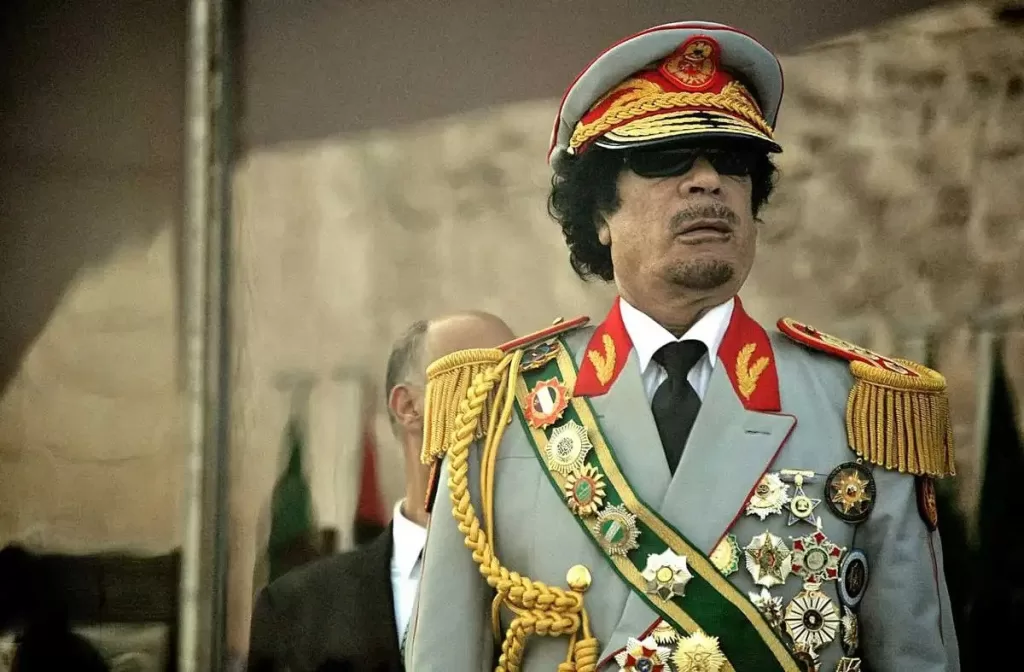
The demise of the Soviet Union by 1990 resulted in a unipolar world where USA’s concept of a New World Order and its ability to impose its will on other nation states through the employment of its superior military force could no longer be effectively countered by a rival power. Its military might was powerful enough to decimate any adversary particularly from the developing states in conventional battles. Operations Desert Storm (Gulf War I), Enduring Freedom (Afghanistan 2001) and Iraq War 2003 were conducted under such settings.
The strongman of Libya Moammar Gaddafi has been overthrown and eliminated by NATO forces in 2011 while currently Syria and Iran are in their crosshair and nuclear Pakistan is being subjected to tremendous pressure to adopt foreign policy measures that would promote US interest in the region. And either through design or default all the target nations happen to be Muslim states. The fact that US led NATO forces had conducted Operations Deliberate Force (1995) and Allied Force (1999) against the Christian Serbs and prevented the massacre and genocide of Bosnian Muslims has not done enough to remove the anti-American sentiments among majority of the population in Islamic countries.
USA and its allies had easily prevailed over the armed forces of Iraq and Afghanistan and attempted to impose their will on the people. This led to an armed insurrection by a fairly large section of the local population against what they considered domination by foreign powers. Imbued with the Al Qaeda ideology of holy Jihad and unable to match the might of US firepower they resorted to unconventional strategies and tactics. Employing a combination of low-tech solutions (Improvised Explosive Devices, suicide bombers) with expertly adopted techniques of motivation and propaganda in support of their cause by using modern communication tools of video, cellphones, internet, facebook, SMS, they had managed to fight the US military behemoth to a standstill in Iraq; and in Afghanistan are poised to force the occupiers to vacate without achievement of their political objectives. The success of this form of armed struggle, albeit at a very high cost to the defenders, was rapidly duplicated by non-state actors in other countries as well where a section of their population with grievances against their states had started an armed insurrection and were confronted with the superior conventional might that had been employed to crush the uprising.
The rise of Al Qaeda was initially a result of the presence of foreign ‘infidel’ forces in the holy land of Saudi Arabia and it rapidly embraced the Palestinian cause and other injustices that USA in support of Zionist Israel had perpetuated on other Muslim countries. The movement has turned into a war between Islam and the Christian/Zionist world and the very concept of Jihad that USA had actively promoted to defeat the Soviet forces in Afghanistan during the 1980s was unleashed with unmatched ferocity against them – the chickens had finally come home to roost. Resurgence of religiously motivated non-state actors spearheaded by the Al Qaeda ideology in combination with appeals to the ethnic/nationalist pride against foreign occupation in deeply conservative and religious societies is a highly combustible mixture that has led to the declaration of holy war on the West for what they fear as an assault on Islam and Islamic values.
This loose group has an agenda of spreading their version of the faith internationally and it draws its members and supporters from nations across the globe where they have their sympathisers. Their ability to spread their message and enhance their support base gets a strong boost due to the real and perceived injustices that the West has inflicted on the nations that adhere to their faith and the general bias against their fellow believers in the Western societies. Their acts of terror against USA and the West in turn further fuel hostility towards their belief in the developed world. This vicious cycle is the principal factor that has failed to stem the violence from both sides and addressing the issues that fan it must form one of the key components for a resolution of the crisis.
Financial interdependence through trade among world nations and the communication explosion has turned the world into a global village where the threat of conventional wars between states has largely receded and instead their power and dominance are being increasingly challenged by non-state actors employing unconventional war strategies and tactics. Military thinkers and historians have labeled such conflicts under the nom de guerre of sub-conventional warfare, which embraces all forms of organized and politically motivated violence that could occur within a state or among a number of states4 where one or both the belligerents resort to unconventional war fighting strategy.
This new challenge has sent the western war experts and historians scrambling to study, characterize and classify the varying nature of sub-conventional wars that are currently posing a danger to their interest and security. New terms like Low Intensity Conflict (LIC), Irregular Warfare (IR), Asymmetric Warfare (AW), 4th Generation Warfare (4GW) and Hybrid Warfare (HW), which essentially are subsets of sub-conventional warfare, are rapidly gaining popularity and acceptance among the western war scholars and experts. While there is a common thread in each of these classifications, there are subtle differences too that necessitate different responses by the states facing the challenge of sub-conventional threat.

Low Intensity Conflicts (LICs)
According to the Pentagon LIC refers to ‘a level of hostilities or use of military power that falls short of a full‐scale conventional or general war. It includes peacekeeping, antiterrorism, assistance to foreign countries for internal defence, fulfilment of international treaty obligations, assistance to foreign law enforcement agencies, and commando operations’.5
PAF AFM 1-1 defines LICs as ‘political-military confrontation between contending states or groups, ranging from propaganda and subversion to the actual use of armed forces that is below the level of conventional war and above that of routine, peaceful competition among states’.6 According to US Army Field Manual 100-20, Low-intensity conflict is defined as ‘a political-military confrontation between contending states or groups below conventional war and above the routine, peaceful competition among states. It frequently involves protracted struggles of competing principles and ideologies. Low-intensity conflict ranges from subversion to the use of the armed forces. It is waged by a combination of means, employing political, economic, informational, and military instruments. Low-intensity conflicts are often localized, generally in the Third World, but contain regional and global security implications.’7
Insurgency and terrorism are some of the manifestations of LIC. While the term insurgency has wide acceptance among the legal fraternity, scholars and academicians, terrorism has to date defied a universally agreed, legally binding, criminal law definition. Premeditated, politically motivated and indiscriminate violence where civilians are deliberately targeted and when these are practiced outside the Laws of Armed Conflicts are generally considered acts of terror, though rarely by its practitioners or supporters. The trouble lies with the definition of civilian. Those who deliberately target civilians or non-combatants justify their act on the grounds that since in a democratic setup the government represents the collective will of the public and war has been imposed on them by their consent, they cannot be termed as non-combatants and hence are fair game. The maxim, one man’s terrorist is another man’s freedom fighter is amply demonstrated in the historical records of all sub-conventional wars.
The armed struggle in the Indian Held Kashmir and the secessionist movements in its East are examples of LICs in India. LIC operations can also be traced to Pakistan’s Western province of Baluchistan, in Burma, in Spain against the Basque separatists and a number of states in Africa, Central and South America.
In LIC operations the state generally does not feel the need to employ its regular armed forces to counter the rebellion. Instead, use is made of the Paramilitary forces in the shape of Rangers, Frontier Corps (Pakistan), Border Security Force, Assam Rifles, Rashtrya Rifles (India) which, in Pakistan are raised and funded separately from the budget of the regular armed forces. In the context of the Indian subcontinent Paramilitary troops are normally commanded by officers on deputation from the regular Army. Employment of airpower is generally restricted to its non-kinetic roles such as surveillance, intelligence gathering, transportation of troops, supplies, emergency casualty evacuation etc. Rotary wing platforms, UAVs and fixed-wing transport fleet perform the bulk of air support roles in LIC operations.
Irregular Warfare/Asymmetric Warfare
In LICs where the level of violence while still remaining below that of a Conventional War is high enough for the state to deploy its regular armed forces to quell the rebellion are normally categorised as Irregular Warfare (IW). The parameters of Irregular Warfare (IW) are very close to LIC except in the level of violence. In IR the employment of regular armed forces and the kinetic use of air power are considered necessary. US AFDD 2-3 defines IW ‘as a violent struggle among state and non-state actors for legitimacy and influence over relevant populations. IW favours indirect and asymmetric approaches though it may employ the full range of military and other capabilities in order to erode all adversary’s power, influence and will.’8 The asymmetric approach refers to the war design of the non-state actors while the employment of full range of military and other capabilities is generally the option of the state.

According to Robert R. Tomes, ‘Asymmetric Warfare or asymmetric approach refers to wars between two belligerents whose relative military power differs significantly. It includes asymmetry of strategy and tactics and can be described as a conflict in which the resources of the two adversaries in essence and in the struggle interact and attempt to exploit each other’s characteristic weakness. Such struggle often involves strategies and tactics of unconventional warfare that the weaker combatants attempt to use strategy to offset the adversary’s superiority in the conventional field.’9 In the modern context, asymmetric warfare is increasingly considered a component of Irregular and Fourth Generation Warfare (4GW).
Should Operation Desert Storm (Gulf War I) and Operation Iraqi Freedom (Gulf War II) be classified under the category of Asymmetric Warfare? To the extent the relative strengths of Iraq and the Coalition Forces differed significantly, heavily favouring the latter, the two conflicts did meet the first requirement of asymmetry. However, the composition of both the Iraqi and Coalition Forces and the strategy and tactics employed by them during both the battles were conventional. Because asymmetry is more about major dissimilarities in force composition and combat strategy/tactics rather than relative strengths of the two armed forces, Conventional rather than Asymmetric, therefore, would be a more appropriate term for the two Gulf Wars. The insurgency that resulted after the defeat of Iraqi armed forces and the overthrow of Saddam Hussein, however, was a case of Irregular Warfare where the force composition and war strategies of the insurgents were in the classic Asymmetric Warfare mould.
The conflicts that are raging in Pakistan’s Tribal Belt, in Philippines, the recently concluded Tamil insurgency in Sri Lanka and the on going ISAF and Russian military operations against the Afghan Taliban and Chechen rebels in Afghanistan and Chechnya respectively are conflicts that are classic cases of Irregular Warfare.
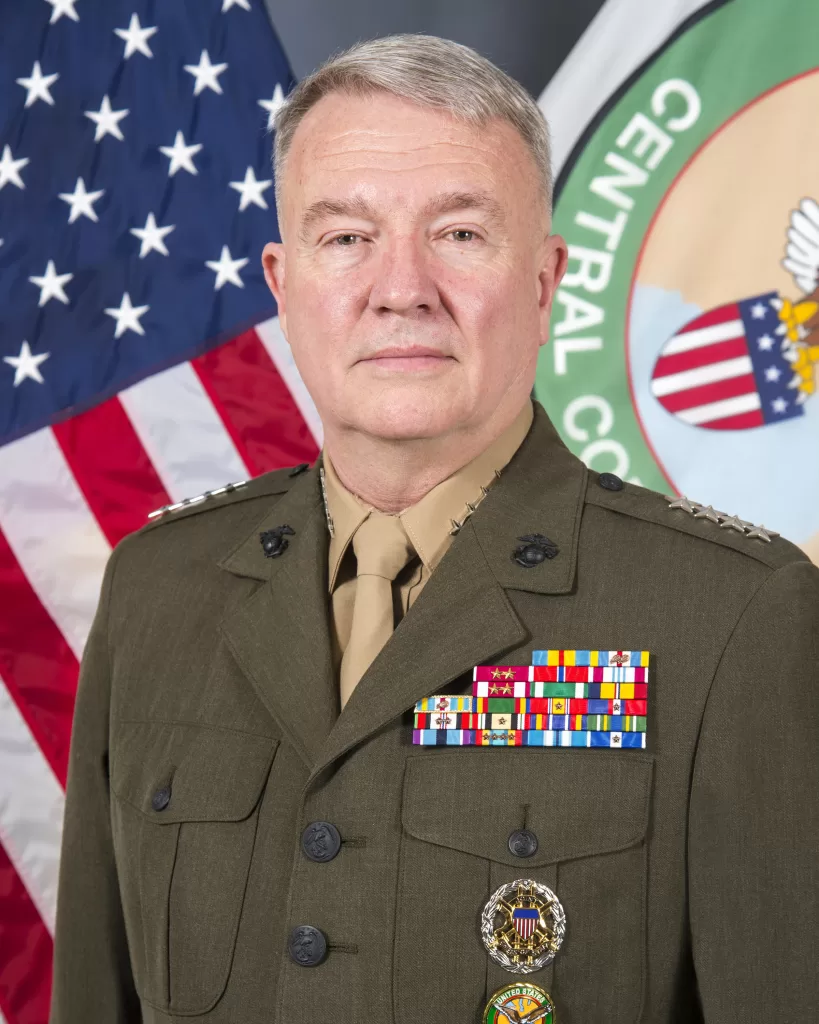
Fourth Generation Warfare (4GW)
4GW is a recent term coined by William S. Lind and his syndicate in 1989 in which the authors studied the ‘dialectally qualitative’ changes in warfare, which, in turn were driven by changes in technology and ideas. They called this future ‘Fourth Generation Warfare’.10 This nomenclature has since been adopted on a regular basis by a number of the US military commanders especially those with combat experience in Iraq and Afghanistan – but not all scholars both with military and civilian backgrounds agree. In the paper ‘Elegant Irrelevance’ written by Marine Major Kenneth F. McKenzie Jr. In 1993, he opined that 4GW as a theory is vulnerable to criticism in every area examined. The method of fourth generation thinkers remain cloaked in jargon, and their reasoning is not adequately defined and illustrated.11 To comprehend 4GW one first needs to study the classification and definition of the first three generations of war.
There is a consensus among the scholars about the timeline of the first three generations of war as perceived by them while there are slight variances in their description. To begin with these classifications relate to modern wars. Since these terms have been coined by western thinkers, modern wars according to them began around the middle of the 17th century.12
The First Generation Warfare (1GW) that covers European Wars from 1648 to 1860 is characterized by linearity where the battle order was dominated by massed manpower armed with smoothbore muskets with the opposing forces employing the line and column deployment strategy.13 A single battle and in some cases (Napoleonic campaigns against Austria) a series of battles decided the outcome of the war. The three battles of Panipat and many other conflicts in the Indian subcontinent would also fall in the 1GW category.
The Second Generation War (2GW) saw its beginning in the American Civil War and reached its zenith during WW I. The technologies of steam, metallurgy and mass production drove the birth of this stage of war.14 It was a warfare based on fire and movement and differed from 1GW in terms of much increased firepower in the shape of repeating rapid-fire rifles and long-range artillery. The industrial growth of the belligerents allowed accumulation of vast war-fighting weaponry that increased the level of violence and destruction. The development of railway system where wide network of railway lines were available to the contestants permitted strategic mobility. Now parallel battles could be conducted simultaneously and the wars fought during this phase could be prosecuted on multiple fronts, even theatres. Entrenched defenders armed with automatic rifles and the susceptibility of infantry and horse-borne cavalry to the hail of bullets from rapid firing firearms resulted in very high casualty to the offensive elements and the resultant mass slaughter that was witnessed during WW I.
The introduction of armoured vehicles, tanks and rapid rise in air power effectiveness towards the very end of the war witnessed a transformation to the 3GW concept where non linearity, dispersion, manoeuvre and combined arms operation in which air power became a key ingredient in both land and sea battles became its hallmark. WW II was fought in the classic mould of 3GW and this trend persisted for the next five decades until the re-emergence of sub-conventional wars forced some scholars to come up with the 4GW model.
4GW, according to William S. Lind would be characterized by extreme dispersion and extreme non-linearity and would be the choice option for the non-state actors while confronting the powerful military of the state. It would be conducted by small armed bands spread throughout the entire war executing pinprick attacks using guerrilla warfare tactics.15 Similar to all subsets of sub-conventional wars 4GW would also be waged simultaneously on the social, cultural and economic planes as well. The centre of gravity for both the state and non-state actors would be about winning the hearts and minds of the local public because non-state actors cannot survive without local support – and the state cannot overcome the insurgency unless majority of the local populace in the region the insurgency has taken root turn hostile towards the insurgents and withdraw their support. With the popular support behind it, the state can overcome the insurgency with limited use of force. Without it the entire campaign would be very expensive, unending and would sap the endurance of even superpowers.
The major difference in this form of warfare from the first three generations is that while in the first three, military was the key force that determined the outcome of the conflict, in 4GW the military factor of the war fighting strategy comprises only a component of the overall war effort and other dimensions such as information, propaganda, economic and media wars would play crucial roles.
The 4GW model has been borne out of the combat experience of the American troops and Generals in Afghanistan and their acceptance of the 4GW concept in their thoughts and writings have influenced other scholars with military background. Others tend to hold a different view. Vincent J. Curtis makes a strong case when he argues that 4GW is basically an operational technique of war fighting and does not qualify to be labelled as a new generation of warfare. He further states that ‘the fundamental errors of the 4GW school of thought are: that it is not the fourth generation of anything, and that it fails to make a clear and sharp distinction between methods of warfare and methods of politics, and that the three Block War concept is more descriptively accurate than the superficial and dogmatically elucidate 4GW system of thought.16
Similarly, Kenneth F. McKenzie Jr. shares the observation of Curtis and opines that the 4GW theorists lean on the ‘qualitative dialectics’ in the creation of their system which must be defined and they have not done this. He further states: ‘as a theory, fourth generation warfare is vulnerable to criticism in every area examined. The method of fourth generation thinkers remains cloaked in jargon and their reasoning is not adequately defined or illustrated.17
The observations and critique of Curtis and McKenzie Jr. have much merit but the 4GW term appears to have gained wide acceptance among a majority of military scholars partly because the writings of combat experienced American troops have very wide circulations. Rather than getting into unnecessary arguments in the semantics of 4GW, it may be wiser to accept it as a subset of Irregular Warfare that is peculiar to the war fighting strategies that the non-state actors have/had adopted against ISAF and US troops in Afghanistan and Iraq respectively.
Hybrid Warfare
With a military budget in excess of the combined military budgets of the next twenty-five nations and as the lone superpower with global interests and aspirations, USA and its military has to prepare for unforeseen contingencies. Back in 2005, National Defence Strategy (NDS) of USA expanded the traditional American focus on potential threats in which their military analysts have suggested that future conflicts will likely be multi-modal or multi variant rather than a simple black and white characterization of one form of warfare. This construct is most frequently described as Hybrid Warfare.18 Hybrid Warfare is likely to be a combination of conventional and unconventional strategies; can be employed by both the stronger and the weaker force and non-kinetic employment methodology is likely to assume a greater share – media, cyber, information and economic warfare are likely to be some of the key components of non-kinetic employment methodology.
While the 4GW concept was borne out of USA’s Afghan and Iraq experience, they now face the spectre of conducting operations against what they consider as rogue states like North Korea, Syria and Iran. North Korean nuclear status has narrowed down the military option to a large extent; the use of force against Iran or Syria is still not off the table. Iran particularly is the current hotspot and non-kinetic methodology is already in play. Cyber war of hacking Iran’s computer programmes associated with uranium enrichment by Israel ostensibly with US help has been going on. In addition, the economic war has also been imposed on Iran via heavy sanctions on trade and commerce while the information, media and propaganda wars by the trio are in full swing to paint Iran as a warmongering state that could destabilize world peace and order. All their efforts so far has not succeeded in forcing Iran to give up on its Uranium enrichment programme that could lead to development of nuclear weapons.
Israel is being strongly suspected of carrying out assassination of Iranian nuclear scientists while the attack on Israeli diplomats in New Delhi India – that could have been a retaliatory act by Iran – are kinetic actions that could lead to outbreak of open hostility. If USA is dragged into a war against Iran, the latter has the ability to conduct its war campaign in the manner listed in the Hybrid Warfare concept.
American think-tanks and military strategists in Pentagon appear to have gone on an overdrive on the Hybrid Warfare concept. From their point of view only by examining and understanding the complexities of Hybrid Warfare can they come up with strategy and tactics to triumph over the opponents who would employ the concept. For nations like Iran, Syria and Pakistan its study is important as it can first help avoid falling prey to the US offensive and if the aggression becomes inescapable, aid in evolving methodology to defeat it.
Conclusion
Wars are normally waged for acquiring or protecting resources, for economic gains or to redress real or perceived injustices. The prohibitive cost of modern warfare between states and the interdependency of trade and commerce among nations have made inter-state wars a rarity but injustices have not been eliminated within a society or among nation states. Today, the principal challenge to world stability and the primary security threat some states confront emanate from non-state actors who have galvanised a religious movement based on a particular version and declared holy war against all those who oppose their understanding of the faith. Even if the country of their origin is of the same faith, if the government does not agree with their strict interpretation, it too is declared an enemy.
The decision by the state to put down the unrest through the use of state power would normally result in the rebels/insurgents/criminal gangs resorting to sub-conventional war techniques to offset the former’s firepower superiority. The need to understand the nature, characteristics and complexities of Sub-conventional wars, therefore, should be accorded a very high priority by those entrusted with the responsibility of defending the state’s integrity, security and well being.
Low Intensity Conflicts, Irregular Warfare, Asymmetric Warfare, Fourth Generation Warfare and Hybrid Warfare are subsets of Sub-conventional Warfare and this paper has examined their broad parameters and principal features. A true understanding of the dynamics of Sub-conventional War brings out a number of important lessons, the most important being that such adversaries have to be engaged on multiple fronts where the use of force is but one dimension and in most instances, not the most critical one.
Appendix To ‘The Changing Nature Of Warfare’ Since World War II’
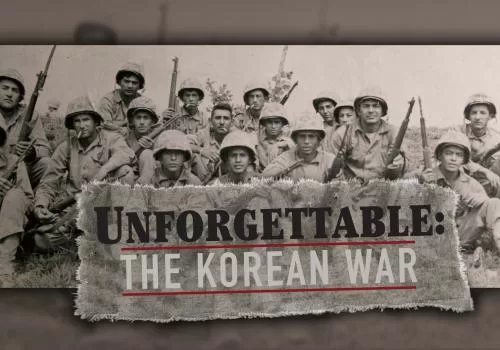
The Korean War
The Korean War (25 June 1950 – 27 July 1953) was a war between the Republic of Korea supported primarily by the United States of America, with contributions from allied nations under the aegis of the United Nations and the Democratic People’s Republic of Korea supported by the People’s Republic of China, with military and material aid from the Union of Soviet Socialist Republics. The Korean War was primarily the result of the physical division of Korea by an agreement of the victorious Allies at the conclusion of the Pacific War at the end of World War II. The Korean peninsula was ruled by the Empire of Japan from 1910 until the end of World War II. Following the surrender of the Empire of Japan in September of 1945, American administrators divided the peninsula along the 38th parallel, with U.S. military forces occupying the southern half and Soviet military forces occupying the northern half.
The failure to hold free elections throughout the Korean Peninsula in 1948 deepened the division between the two sides; the North established a communist government, while the South established a capitalist one. The 38th parallel increasingly became a political border between the two Korean states. Although reunification negotiations continued in the months preceding the war, tension intensified. Cross-border skirmishes and raids at the 38th Parallel persisted. The situation escalated into open warfare when North Korean forces invaded South Korea on 25 June 1950. It was the first significant armed conflict of the Cold War. In 1950 the Soviet Union boycotted the United Nations Security Council. In the absence of a dissenting voice from the Soviet Union, who could have vetoed it, USA and other countries passed a Security Council resolution authorizing military intervention in Korea.
The United States of America (88% of foreign troops) and other members of the United Nations force (12% of foreign troops), came to the aid of South Korea in repelling the invasion, but within two months the defenders were pushed back to the Pusan perimeter, a small area in the south of the country, before the North Koreans were stopped. A rapid U.N. counter-offensive then drove the North Koreans past the 38th Parallel and almost to the Yalu River. It was then the Peoples Republic of China (PRC) entered the war directly albeit on the side of North Korea. The Chinese launched a counter-offensive that pushed the United Nations forces back across the 38th Parallel. The Soviet Union materially aided the North Korean and the Chinese armies. The active stage of the war ended on 27 July 1953, when the armistice agreement was signed. The agreement restored the border between the Koreas near the 38th Parallel and created the Korean Demilitarized Zone (DMZ), a 2.5-mile (4.0 km) wide buffer zone between the two Koreas. Minor outbreaks of fighting continue to the present day.19
North Korea received generous military and financial support from the USSR which, however, did not commit its regular combat forces in the battle, notwithstanding the aerial combat duels between a handful of Soviet instructor pilots operating the Mig-15s that USSR had provided to the North, and USAF pilots flying the Sabre jets in support of the South. US forces on the other hand were directly engaged in the war in support of South Korea. The Korean War was hence a proxy war. Chinese forces were eventually drawn in during the second phase of the conflict but at that point in time it was a non-nuclear state, hence the maxim that nuclear powers do not engage in direct conflicts with one another was not violated.
According to some sources in the UN offensive across the Yalu River, the US military did consider and even proposed the use of nuclear weapons to break the logjam but JCS rejected the suggestion20 and President Truman accepted its advice. He understood that any use of nuclear bombs against the Peoples’ Republic of China could force the Soviet Union to unleash its nuclear arsenal against the UN forces in Korea which would easily turn into a nuclear holocaust. The Korean War ended as a stalemate for the two superpowers.
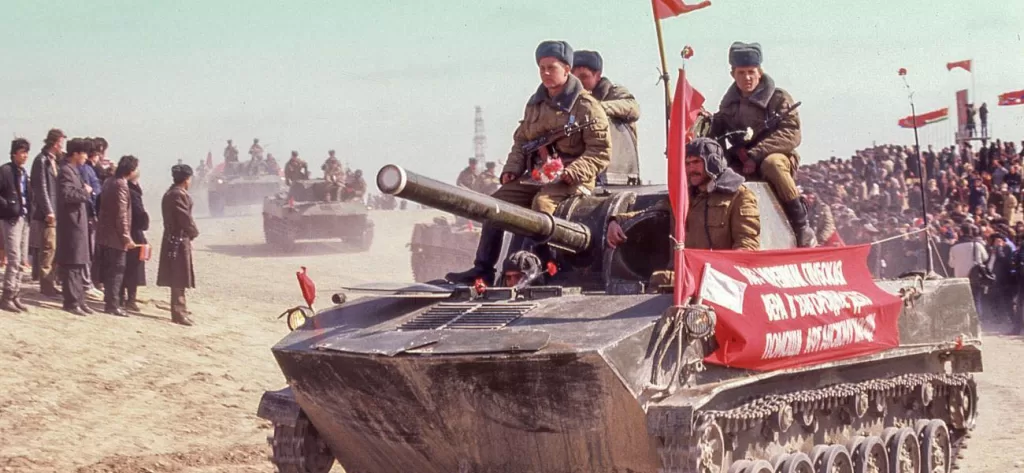
The Vietnam War
The Vietnam War was a Cold War era military conflict that occurred in Vietnam, Laos, and Cambodia from 1 November 1955 to the fall of Saigon on 30 April 1975. This war followed the First Indochina War and was fought between North Vietnam, supported by its communist allies, and the government of South Vietnam, supported by the United States of America and other anti-communist countries. The Viet Cong (also known as the National Liberation Front, or NLF), a lightly armed South Vietnamese communist-controlled common front, largely fought a guerrilla war against anti-communist forces in the region. The Vietnam People’s Army (North Vietnamese Army) engaged in a more conventional war, at times committing large units into battle. U.S. and South Vietnamese forces relied on air superiority and overwhelming firepower to conduct search and destroy operations, involving ground forces, artillery, and airstrikes.
The U.S. government viewed involvement in the war as a way to prevent a communist takeover of South Vietnam as part of their wider strategy of containment. The North Vietnamese government and Viet Cong viewed the conflict as a colonial war, fought initially against France, backed by the U.S., and later against South Vietnam, which it regarded as a U.S. puppet state. American military advisors beginning in 1950 arrived in what was then French Indochina. U.S. involvement escalated in the early 1960s, with troop levels tripling in 1961 and tripling again in 1962. U.S. combat units were deployed beginning in 1965. Operations spanned international borders, with Laos and Cambodia heavily bombed. American involvement in the war peaked in 1968, at the time of the Tet Offensive. After this, U.S. ground forces were gradually withdrawn as part of a policy known as Vietnamization. Despite the Paris Peace Accords, signed by all parties in January 1973, fighting continued.
U.S. military involvement ended on 15 August 1973. The capture of Saigon by the Vietnam People’s Army in April 1975 marked the end of the war, and North and South Vietnam were reunified the following year. The war exacted a huge human cost in terms of fatalities (see Vietnam War casualties). Estimates of the number of Vietnamese soldiers and civilians killed vary from less than one million] to more than three million. Some 200,000–300,000 Cambodians, 20,000–200,000 Laotians, and 58,220 U.S. service members also died in the conflict.21
The Vietnam War ended as a defeat for the USA and victory for the USSR.
The Soviet Invasion of Afghanistan
The Soviet war in Afghanistan was a nine-year proxy war during the Cold war involving the Soviet Union forces supporting the Marxist-Leninist government of the Democratic Republic of Afghanistan against the Afghan Mujahideen guerrilla movement and foreign “Arab–Afghan” volunteers. The Mujahideen received unofficial military and/or financial support from a variety of countries including the United States, Saudi Arabia, the United Kingdom, Pakistan, Israel, Indonesia and China.
The initial Soviet deployment of the 40th Army in Afghanistan began on December 24, 1979 under Soviet President Leonid Brezhnev. The final troop withdrawal started on May 15, 1988, and ended on February 15, 1989 under the last Soviet leader Mikhail Gorbachev. Due to the interminable nature of the war, the conflict in Afghanistan has sometimes been referred to as the “Soviet Union’s Vietnam War” or “the Bear Trap”.22
As a result of the war, USSR imploded when its Baltic states and its southern territories that it had acquired through conquest broke away from the Federation of Soviet Union and in addition all its client Eastern European states left its fold and came out of the Iron Curtain. USSR became Russia and lost its status as a superpower that left USA as the sole superpower of the globe. USA believed it had extracted its revenge from USSR for the latter’s role in its ignominious defeat during the Vietnam Conflict.
USA’s defeat of USSR that led to its subsequent disintegration appeared to be a stunning victory for USA and its Capitalist philosophy but there was a price to be paid. The Americans by aggressively promoting the concept of Islamic Jihad among the Afghan Mujahedeen to defeat the Godless Communists had let the genie of religious fanaticism out of the bottle. This phenomenon would haunt the sole superpower of the world merely half a decade later.
End Notes
1 AFM 1-1 PAF, page 13
2 Ibid, page 20
3 Ibid, page 21
4 AFM 1-1 PAF, page 19
5 Information taken from http://www.answers.com/topic/low-intensity-conflict accessed on 7 March 2012
6 AFM 1-1, page 21
7 Information available at website http://en.wikipedia.org/wiki/Low_intensity_conflict accessed on 7 March 2012
8 AFDD 2-3, Irregular Warfare, 1 August 2007, page 1
9 Asymmetric Warfare by Robert R. Tomes, taken from http://en.wikipedia.org/wiki/Asymmetric_warfare accessed on 7 March 2012.
10 Mr. Vincent J. Curtis, the theory of fourth generation warfare, Canadian Army Journal Vol. 8.4 (winter 2005), 17-32, page 17.
11 Kenneth F. McKenzie Jr., Elegant Irrelevance: Fourth Generation Warfare, autumn 1993, page 58. The article was accessed from: http://www.dtic.mil/cgi-bin/GetTRDoc?AD=ADA515609 on 1 March 2012.
12 Op cit, Curtis J. Vincent, page 17, he asserts in his article that ‘Lind opens his analysis with the assertion that modern war began at the end of the thirty years war that concluded in 1648 with the Treaty of Westphalia.’
13 Op Cit, Kenneth F. McKenzie Jr., page 52.
14 Ibid
15 Commander Mohammad Azam Khan, PN (Retd), the Fourth Generation War, Defence Journal, January 2012, page, 81.
16 Op cit Curtis J. Vincent, pages 31-32.
17 Op Cit, Kenneth F. McKenzie,
18 Hybrid Warfare, National Defence Strategy paper prepared by Mr. Frank Hoffman, CETO, (703), 784-0451, 30 July 2008, p. 4
19 Details obtained from http://en.wikipedia.org/wiki/Korean_War accessed on 21 February 2012.
20 Bruce Cummings, Why did Truman really fire McArthur, see under the side heading: a blocking blow, website http://hnn.us/articles/9245.html accessed on 7 March 2010.
21 Details obtained from http://en.wikipedia.org/wiki/Vietnam_War accessed on 21st February 2012.
22 Details obtained from http://en.wikipedia.org/wiki/Soviet_war_in_Afghanistan accessed on 21 February 2012.


